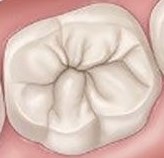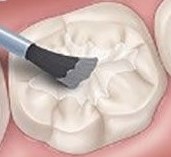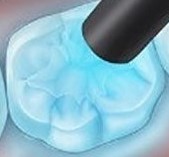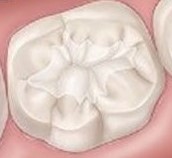School Dental Sealant Programs
The Centers for Disease Control and Prevention states there are two public health measures proven to improve the oral health of a community:
- Community Water Fluoridation (reduces cavities by 25%)
- School Dental Sealant Programs (reduce cavities by 50%)
What is a dental sealant?
A dental sealant is a tooth-colored coating that is brushed down into the pits and grooves of the back molars and is hardened with a special light. The sealant creates a smooth surface that keeps out food and bacteria.
Why are dental sealants important?
- 9 out of 10 cavities occur in the pits and grooves of the chewing surfaces on the back permanent (adult) molars.
- These pits and grooves collect food and bacteria and are so deep that they are very difficult (impossible) to clean with a toothbrush.
- A child that has one molar filled at age 10 will pay over $6,105 to maintain that one molar by the time they reach the age of 79. (Multiply that cost by 8, since adults have 8 molars).
- Dental sealants can prevent about 80% of the cavities in the molar teeth.
- School dental sealant programs (SDSPs) – often a one-time intervention – can prevent 50% of the cavities in the molar teeth.
What is a school dental sealant program (SDSP)?
In a school dental sealant program, dental sealants are provided by licensed dental professionals using portable equipment within the school setting. By offering this free service in the schools, millions of children can receive this basic preventive dental service. The only thing needed is permission from a parent or guardian.
When do kids need sealants?
The very first set of four back permanent molars comes in when a child is about 6 years old (1st, 2nd, or 3rd grade). The second set of permanent molars comes in at 10 to 12 years of age (4th, 5th, or 6th grade). Most SDSPs see a child for two consecutive years, so the child’s mouth and sealants can be checked at least twice.
Does your school have a sealant program?
To learn if your school or a school near you offers a school sealant program, contact Karen Phillips, Program Analyst at Oregon Health Authority, at karen.phillips@dhsoha.state.or.us or 971-673-0235.





